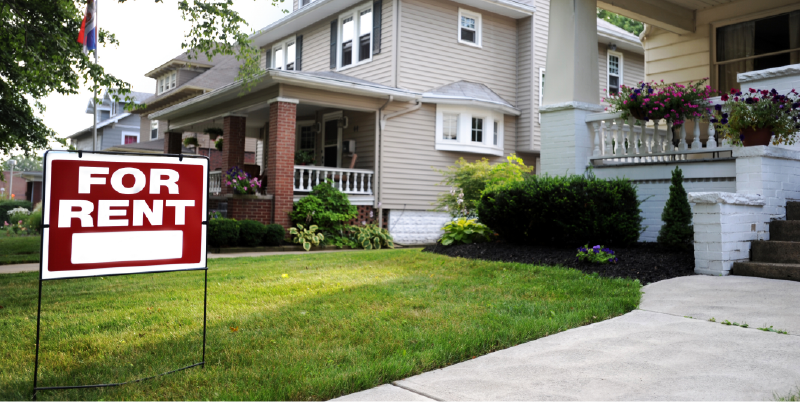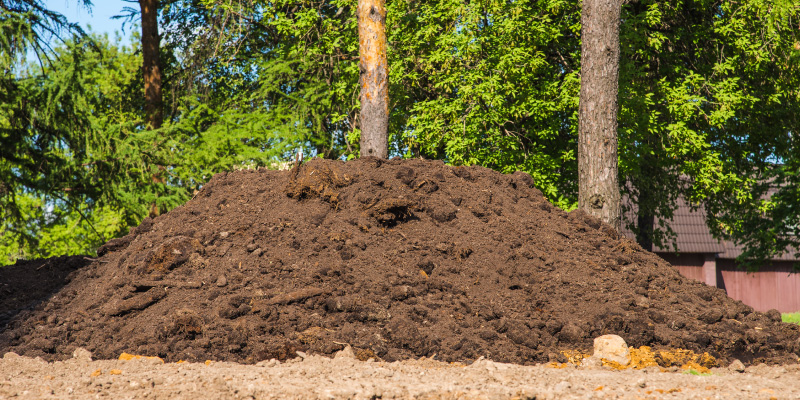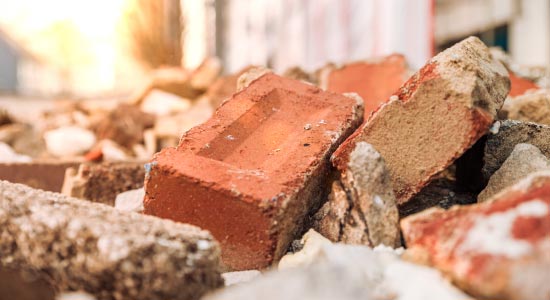
Updated April 22, 2024
Tearing down existing buildings and disposing of the debris is not exactly resource-efficient.
In 2019, more than 600 million tons of construction and demolition (C&D) debris were generated in the U.S. alone, and more than 90% of that total was a result of demolition.
C&D debris has a negative impact on our environment when dropped at a landfill, so it's important to find alternative solutions.
Jump to:
- Benefits of Reducing the Amount of C&D Debris You Send to Landfills
- Benefits of Deconstruction
- Common Recyclable and Reusable Materials
- How to Recycle C&D Debris
Find demolition contractors near you
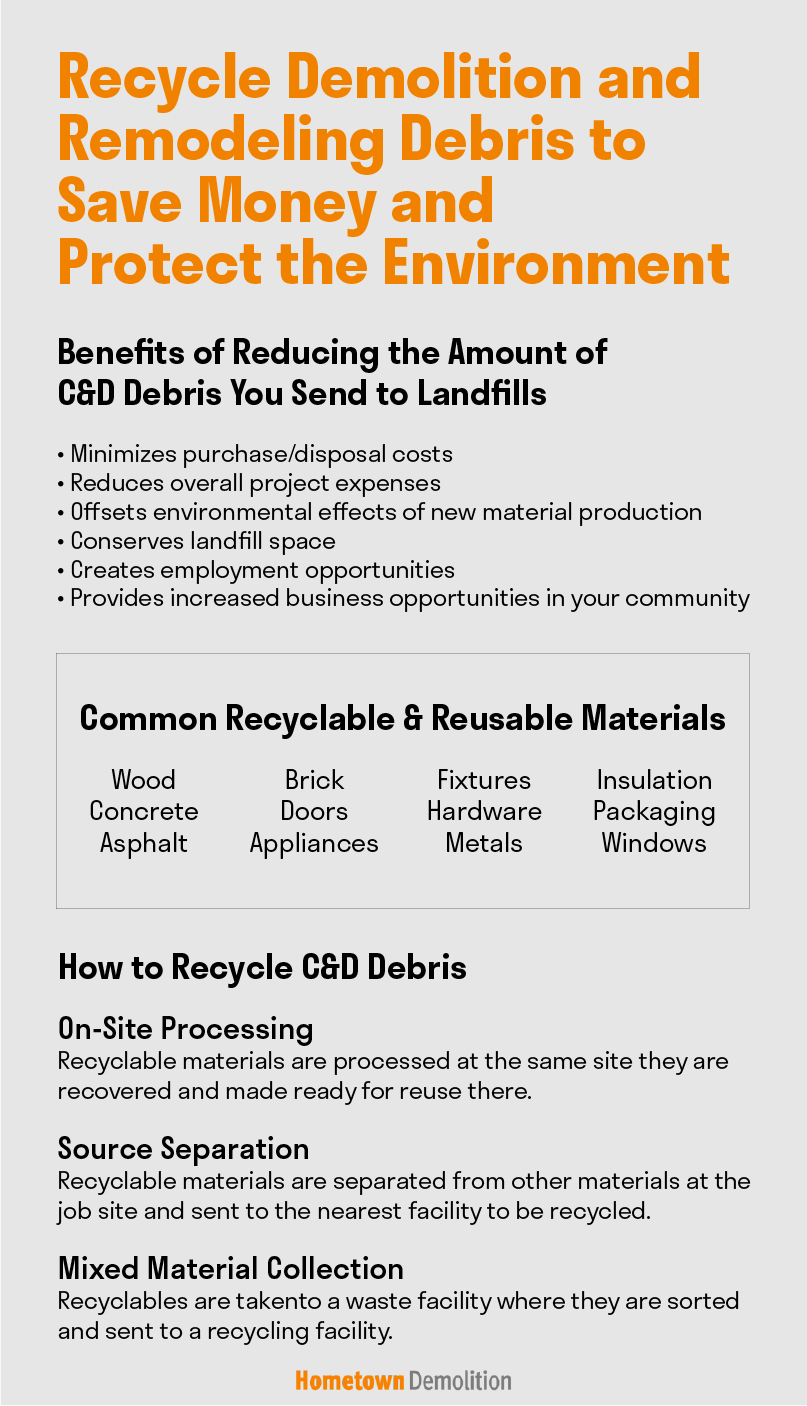
Benefits of Reducing the Amount of C&D Debris You Send to Landfills
- Reduces overall project expenses by minimizing purchase/disposal costs.
- Offsets the environmental effects of producing new materials.
- Conserves landfill space, requiring fewer disposal facilities, and reducing the associated impacts on the environment.
- Creates employment opportunities and provides increased business opportunities in your local community.
To salvage as many reusable materials as possible, opt for deconstruction rather than demolition.
Salvaging C&D materials that are still valuable is the most effective way to save money and protect our planet and its natural resources.
Deconstruction involves the careful disassembling of structures in order to recover any reusable or recyclable materials.
Benefits of Deconstruction
- Diverts demolition debris from the landfill
- Maximizes the amount of materials recovered
- Conserves limited natural resources
- Provides employment opportunities and more job training
According to the President of the Building Materials Reuse Association, Brad Guy, demolition debris makes up nearly 60 percent of the nation's total yearly waste stream.
By choosing deconstruction over demolition, not only do you save these materials from clogging up landfills, but you are also reducing the amount of carbon dioxide produced when new materials are made.
Common Recyclable & Reusable Materials
Some of the most commonly recycled and reused C&D materials include:
- Wood: Cutoffs can be used for lintels and blocking rather than cutting fresh lumber, scraps can be recycled into products like mulch or furniture. Barn wood is valuable and sought-after for rebuilding and interior remodeling.
- Concrete, asphalt, brick, and masonry: These materials can be recycled into aggregate or new concrete or asphalt products.
- Doors, appliances, fixtures, and hardware: These items are easy to remove and typically last a long time, making them great for repurposing in other projects or builds.
- Metals: Copper, brass, aluminum, and steel are all valuable metals you can recycle.
- Insulation: Excess exterior insulation can be used in interior walls to reduce noise.
- Packaging materials: These items can be returned to suppliers for reuse, and many are recyclable, like corrugate cardboard.
Learn more:
- How to Dispose of Demolition Debris Properly
- Eco-Friendly House Demolition: Sustainability in Deconstruction and Recycling
- Sustainable Mobile Home Removal: Eco-Friendly Practices for Disposal and Recycling
How to Recycle C&D Debris
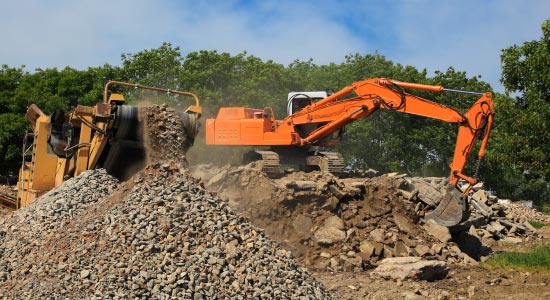
Not only is recycling C&D debris easy, with thousands of facilities across the country, but it's less expensive, too.
There's also more than one way to recycle debris...
On-Site Processing
With on-site processing, recyclable materials are processed at the site they are recovered from and made ready for reuse there.
Your team is typically responsible for sorting through all the material on your project site. Non-hazardous materials will be ready for recycling/reuse after they've been sorted through and categorized.
Source Separation
This involves separating recyclable materials from other materials at the job site and then sending it to the nearest facility to be recycled.
Your team is responsible for separating the material appropriately, but instead of being recycled/reused on-site, the different materials will be sent to a separate facility off-site for recycling.
Mixed Material Collection
This involves transporting multiple types of materials from the job site to a waste facility where they are then sorted and sent to a recycling facility.
Unlike the other methods, your team is not responsible for sorting through and separating the debris, as this is done off-site at the appropriate facility.
Looking for a demolition contractor? Start here.
Keep reading:

